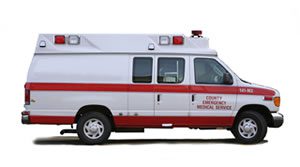
First aid response and treatment procedures should be a key component of any workplace OHS program. There will perhaps come a time when a worker, supervisor, customer or other visitor will suffer an illness or injury in your workplace that requires immediate first aid attention, and the responsibility is on employers to ensure that proper first aid attention can be provided. All workplaces must ensure that they provide the equipment, supplies and facilities to deal with such unforeseen emergencies – not to mention ensuring that people in the workplace have adequate first aid training to identify and/or treat an injury or illness.
Not only is it basic common sense to take measures to provide adequate first aid treatments in the workplace, but first aid regulations are also the law. Each province and territory in Canada has first aid regulations, and failure to comply with these regulations results in potentially unsafe and inadequate work conditions, and also puts a company at risk of liability.
While all Canadian provinces and territories require that employers provide first aid equipment and supplies, and have personnel trained in first aid procedures, there is some variation in how these requirements are regulated in different jurisdictions. For instance, some provinces and territories include first aid requirements in their OSH statute or general safety regulations, while others have separate first aid regulations under their OHS laws, and still others include first aid in their workers’ compensation laws.
No matter where in the law the first aid regulations are contained, the actual requirements are generally the same throughout the various jurisdictions, typically covering five areas. The first requirement covers the inclusion, location and contents of a first aid room in the workplace, and the second requirement addresses the location and contents of a first aid kit in the workplace. The third requirement addresses first aid training, including what should be covered in such training and how many trained personnel are required in a particular work environment. The fourth requirement relates to the tracking and maintenance of first aid records, and the fifth requirement relates to the transportation of any injured or ill workers to an appropriate medical treatment facility.
First aid requirements often vary depending on the size of the workplace (usually the number of workers per shift) and/or the industry type or risk level involved in the work being done. Therefore, larger workplaces with higher risk work must comply with the toughest requirements, while smaller workplaces with lower risk work follow less stringent requirements. As well, some jurisdictions impose specific requirements for first aid treatment in off-premise situations (including workers alone or in isolated environments, and drivers/operators using company vehicles). Generally, first aid requirements are not applicable to hospitals, clinics, nursing homes, etc., as these types of establishments are expected to already be well-equipped to provide first aid and more detailed medical attention.
While the treatment of illnesses and/or injuries is ultimately the responsibility of medical professionals, sometimes the first minutes after the occurence of injury or illness are absolutely crucial – and providing adequate first aid training, supplies and facilities is of key importance. In fact, in the interim before the arrival of emergency personnel, the level of first aid preparation can save a life – or, in a situation involving inadequate workplace first aid, can result in the loss of life for a valued employee.
By law, employers must establish and maintain thorough safety and first aid procedures, both for the avoidance of job-related hazards, and for dealing with the aftermath of an unexpected injury or illness. For more information on specific first aid regulations in your province or territory (or in the federal jurisdiction), visit the appropriate government website.
Simply Safety! incident management software can help protect you and your company by allowing you to be proactive in reducing risk and associated costs and keeping an accurate due diligence trail. Simply Safety! software program replaces paper-based or spreadsheet tracking with a modern efficient way to manage critical compliance data.
Looking for a better way? Call 1 800 862-9939 today to book a 20 minute online web demo of Simply Safety! for your management team!
Visit the Simply Safety! products page.
